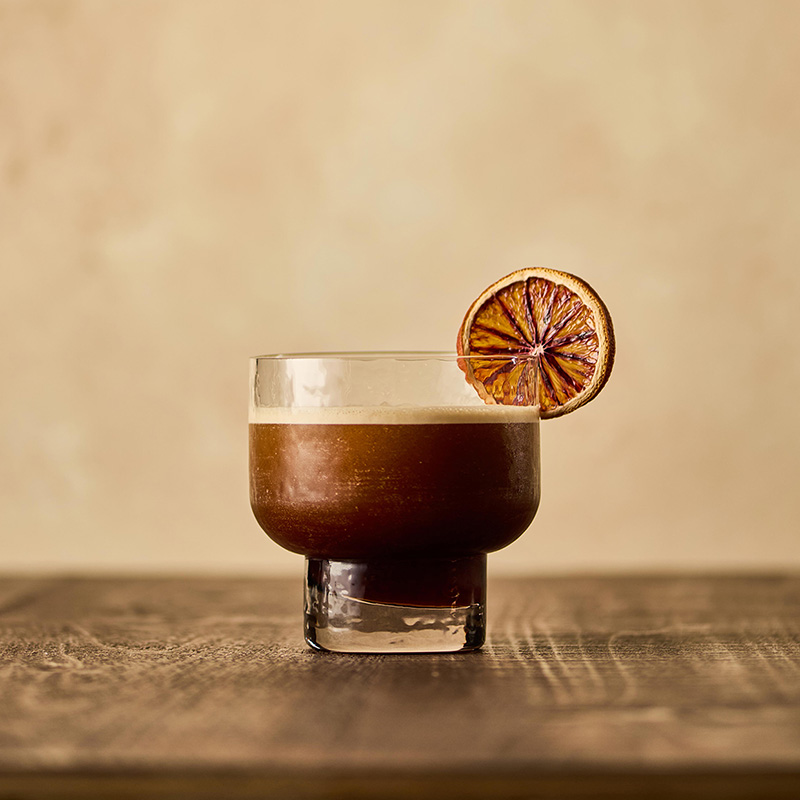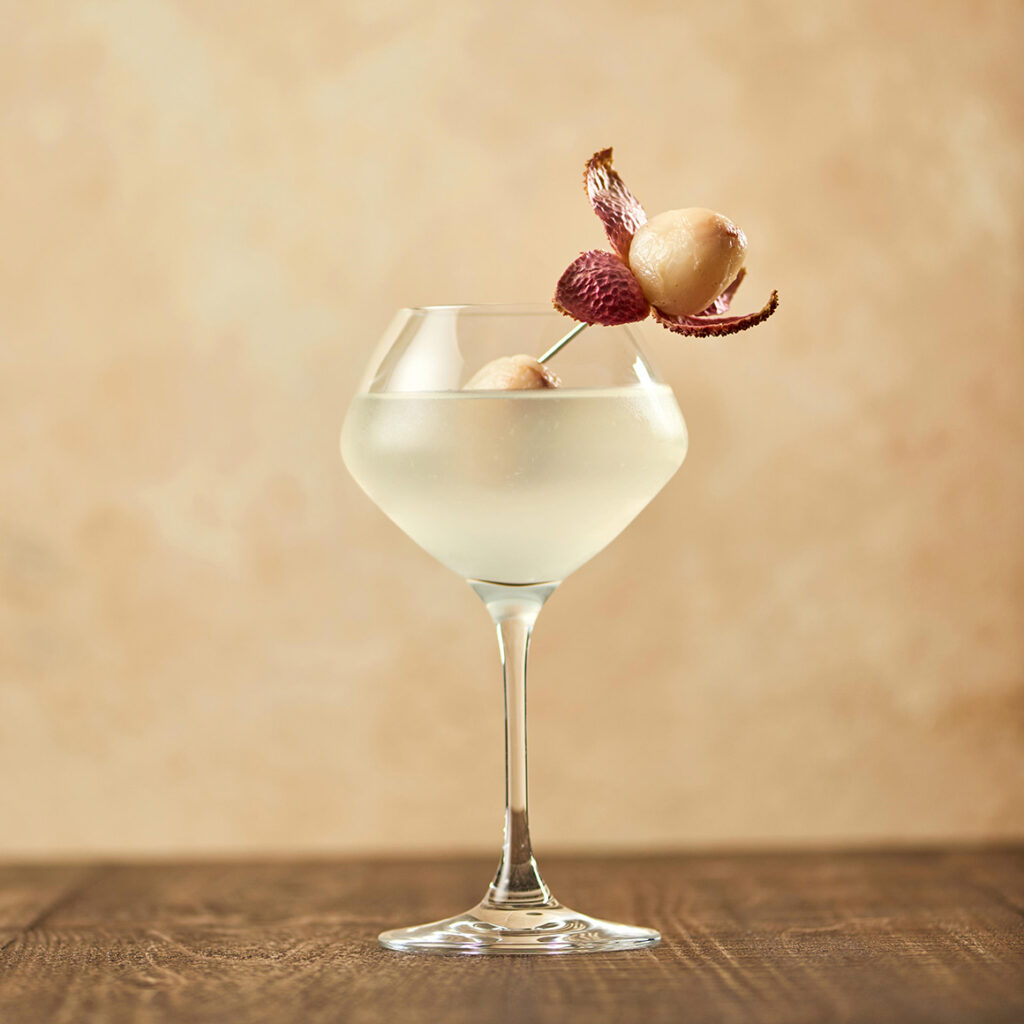A Comprehensive Look at 2025 Alcohol Trends
According to ScienceDirect, alcohol consumption increases seasonally during warmer months. Since we’re officially living the hottest months of the year, refreshment is top-of-mind. And because we closely follow (and actively work in) the space, we’re dedicating this month to an exploration of what’s cool in alcohol. Pun intended.
NoLos (No and Low Alcohol)
There are various forces driving this change, e.g., a preference for alternatives (e.g., marijuana, cannabis drinks, psychedelics, and kava), federal dietary guidelines encouraging moderation, the U.S. Surgeon General’s request for warning labels linking alcohol to cancer, personal health and wellness goals, and even a decline in social gatherings – especially for Gen Z, dubbed “the homebody generation.” According to the Wall Street Journal, “a growing sober set is taking over mosh pits and football stadiums, partying even harder without booze.” This year, roughly one-half of adults planned to drink less, up from 41% in 2024. That shakes out by cohort as follows:
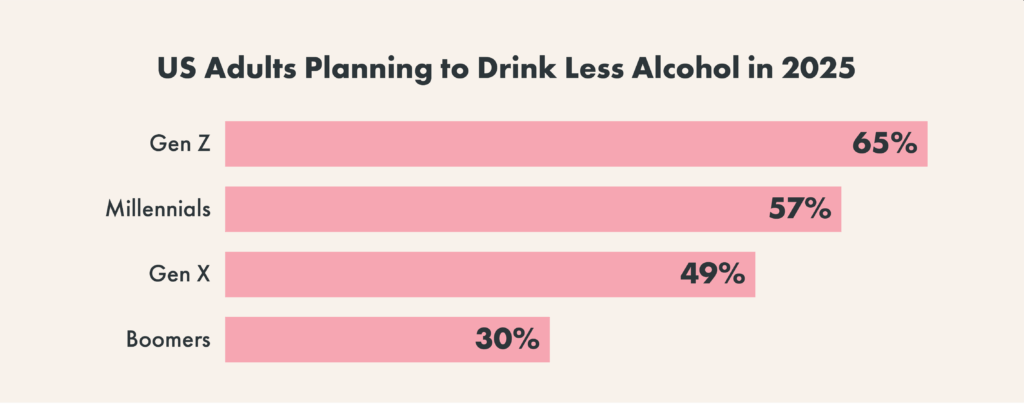
While the rising trend has serious implications for manufacturers and beverage programs, it doesn’t mean all is lost.
- Some consumers opt for zebra-striping behavior, consuming both alcohol and alcohol-free alternatives during the same occasion
- Global spirits companies like Diageo, have successfully pivoted, with non-alcoholic spirits that outperform their alcoholic sister brands
- The premiumization of mocktails is driving profit and category excitement, with bartenders “putting more intention behind their NA offerings…thinking as they would about a traditional cocktail menu to ensure flavor, balance, and variety”
- Functional offerings like Ceybon AF that offer a mix of health and experience via a Chinese medicine-inspired RTD beverage, represent white space in an increasingly crowded NA category
- The alcohol-alternative beverage market is expected to reach $29 billion by 2026, prompting potentially lucrative mergers, acquisitions and innovation
Looking now at alcohol, we note the following trends:
Mexican Renaissance
The popularity and emergence of Mexican beverages is undeniable. Last year alone we witnessed:

So, what are we seeing now? More of the above, as well as Alma Tepec, a chile liqueur made from Oaxacan, smoke-dried pasillas, and a detour to Spain. Expect more sherry-forward cocktails, quinquina (an aromatized wine akin to vermouth), Basque txakoli wine, The Yayo (popular with Madrileños), and the Spanish version of the G&T – traditionally served in a balloon-shaped glass filled with fruits…sangria style.
Asian Mixology
While last year was dominated by Japanese liquors (sake, Japanese whiskey, and shochu), and cocktails (boba, matchatinis, wasabi-infusions, kakigori-style shaved ice creations, Japanese bitters, garnishes, and mastering Japanese techniques), we also saw the emergence of white spirits from China and Korea (baijiu and soju, respectively), as well as Korean makgeolli (milky rice wine).
In 2025 we see:
- New York mixologist Jae Bae’s Asian soup-inspired cocktail video series
- The Korean-inspired Orion Bar (Brooklyn) embracing a spicy ramyun-style brothback, and ingredients like rice, dried magnolia berries, dasima (kelp)
- Asian bars and bartenders making industry analyst lists in 2025: Almanac (Philadelphia), Kumiko (Chicago), and Christine Kim of Service Bar (Washington, D.C.)
- Hong Kong hosting the “World’s 50 Best Bars” award ceremony
- Single-serve, RTD “cup sake”
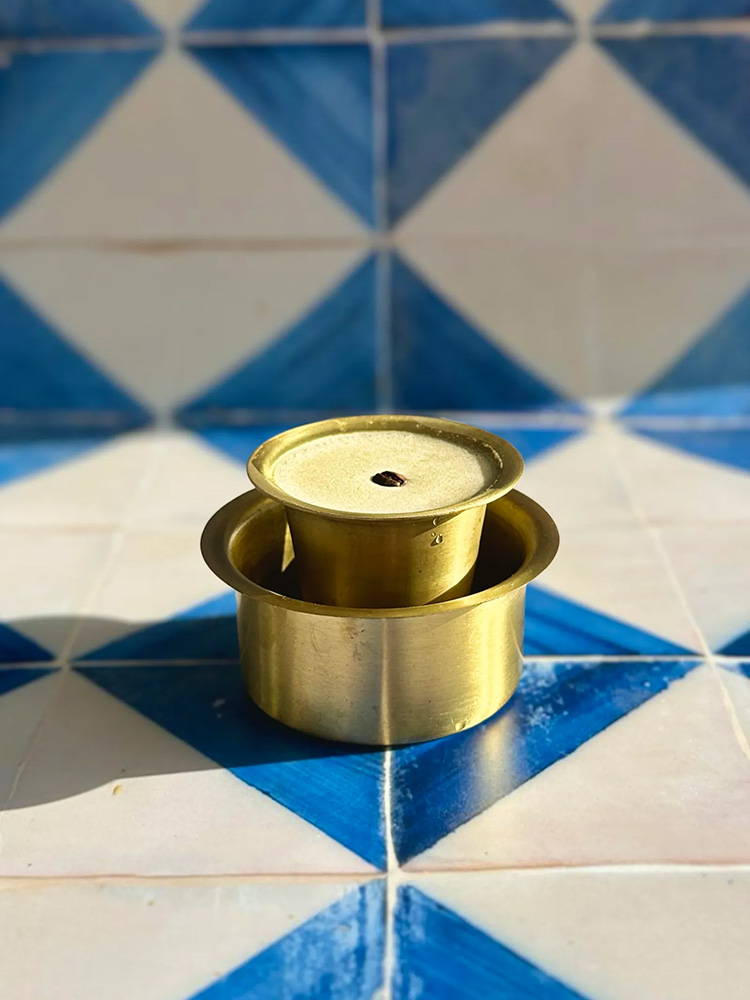
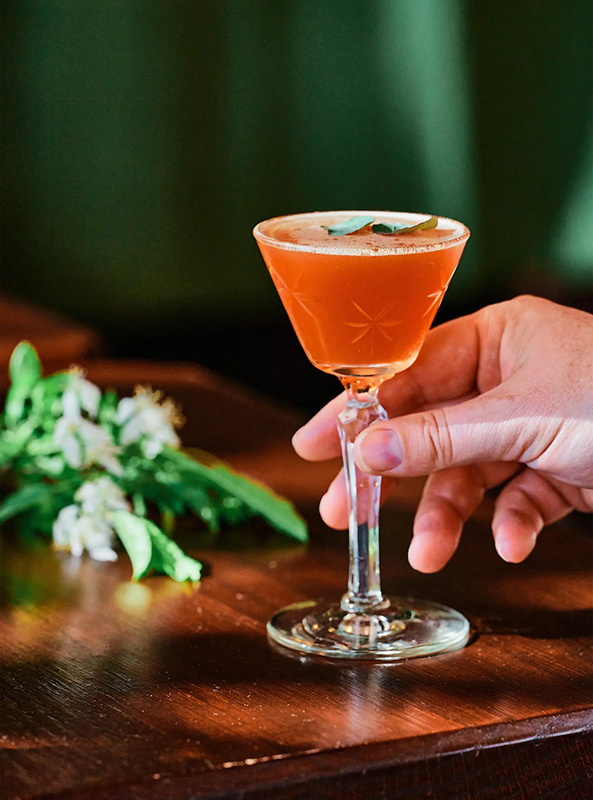
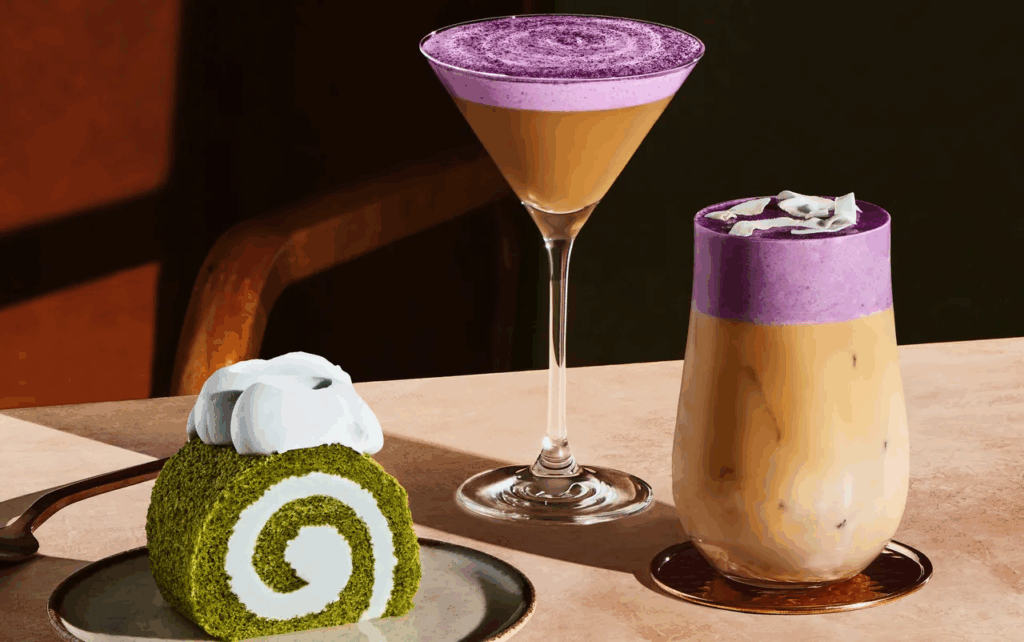
Coffee-Inspired
Chances are you’re familiar with Irish coffee, espresso martinis, coffee tonics, and maybe even the revolver, cold brew Negroni, and the carajillo. For this year, let’s add an ube espresso martini, caffè amaro (cold brew, amaro, vermouth, and lemon), and homemade coffee grounds liqueur.
Minis
The mini trend – ordered alone, in flights, or offered gratis by bartenders – continues with:
- Mini martinis
- The Chupetini, a 1.5 oz “umami bomb” with herb, habanero and garlic-infused vermouth
- Bloody mary and mimosa flights
- Shots galore, e.g., ice-cold vodka with a pickled mushroom, the Snaquiri (daiquiri shooter), coffee liqueur and mezcal, etc.
- The Aperi-Tea experience at London’s Four Seasons Hotel Tower Bridge, proper tea-friendly bites paired with mini cocktails
- Wine and spirits in smaller packages at C-stores, as 9 in 10 shoppers are consuming within one hour of purchase
Planet-Friendly
Current buzz is around organic and biodynamic vineyards, regenerative farm crafted beer, sustainable grains like Africa’s fonio, aquafaba – a more sustainable cocktail foam than egg whites, and Target’s new “collective good” wine packaged in paper bottles.
Miscellaneous
Our favorite finds across the industry:
- Beer. Texas icehouses – wholly unassuming, open-air, community watering holes that over the last 100 years have evolved from selling ice blocks to brews. Local-only beers, produced by smaller breweries and not focused on expansion, as well as cream ales and aromatic, Italian pilsners
- Martinis. Asian-inspired Lychee, or Cucumber Wasabi flavors, the garlic Parmesan martini at The Red Fox in Boston, the citrus-forward, 50/50 style Kangaroo, a ‘Burnt’ Martini, with a splash of Scotch whisky, a summery, savory Tomatini, cherry martini searches up +80%, and the Adult Happy Meal consisting of a stiff martini and a bowl of fries
- 2-Ingredient Cocktails. The Black Russian (coffee liqueur + vodka), Spaghett (light beer + Aperol), and Red Eye (beer + tomato juice)
- Sweet Sips. The creamsicle-inspired Thunderbird, floral, fruity Daffodil, and twists on the tropical Jungle Bird
- Batched. The never-ending Infinity Cocktail, fractionally blending spirit-only new batches into old batches, to develop layered flavors
- Bar Kabawa. A destination for rum lovers, from the team at Momofuku
- Tastings. The $225 multicourse cocktail tasting menu at NY’s Clemente Bar
- Late Night Happy Hours. A shift from the traditional early evening.
- Shake Shack’s first-ever restaurant with a full bar, in Atlanta.
- GRL Power. Melly Barajas, the “queen of tequila,” an all-female distiller of Leyenda de Mexico and named to Forbes 50 Over 50: Global list, and Speed Rack, a global bartending competition for women
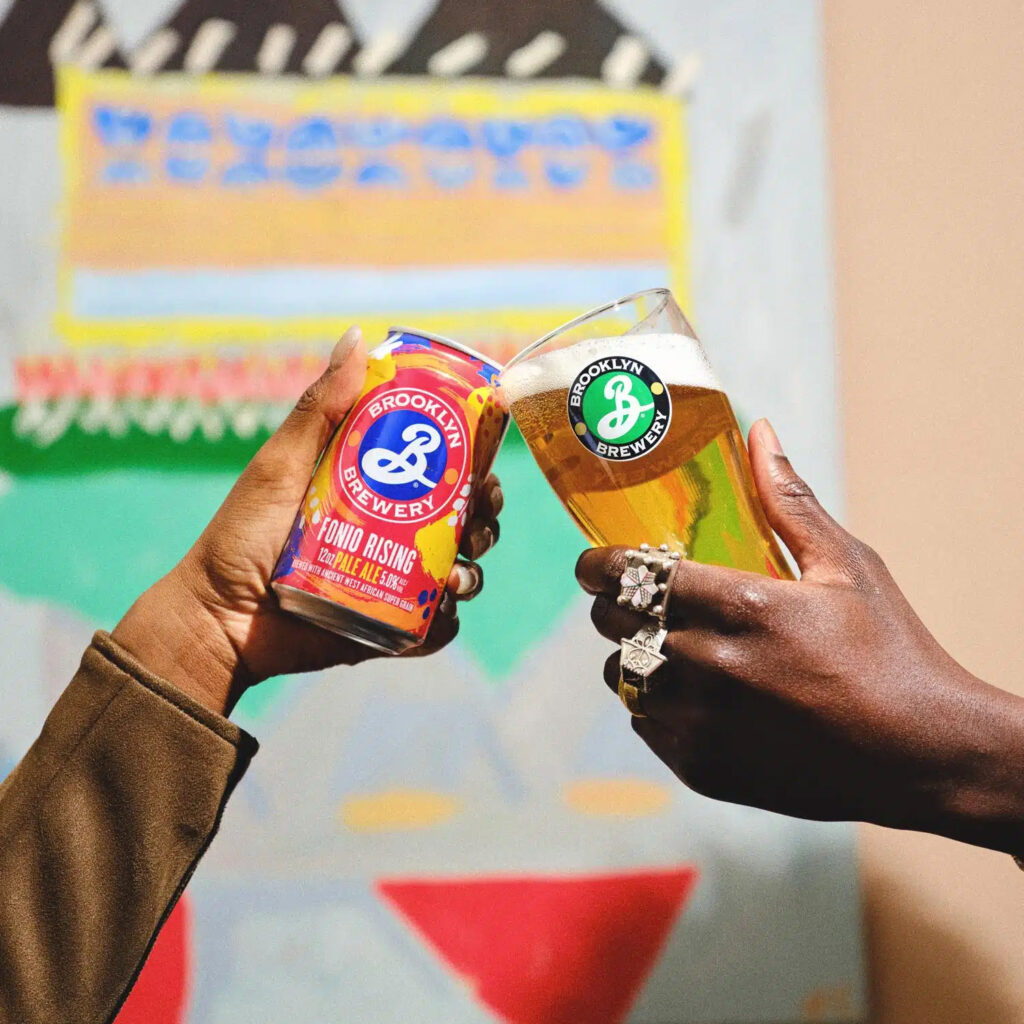
The above should give you plenty of conversation starters or places and things to check out. As far as how to leverage this for your business, we suggest the following:
- Focus on “drink identity,” as some patrons make decisions based on a drink’s name, how it was created or what it’s an homage to
- Consider menu pairings for NA and low alcohol drinks
- Innovate in “bar food.” History tells us that tavern snacks included seafood canapés, potted meats or rillettes (French charcuterie), spiced cakes, and deviled eggs that can pair with beer, wine, or cocktails. A more modern take? Gourmet popcorn, frosted nuts, cotton candy and interactive tastings
- Sponsor a staff “shift drink,” a time-honored tradition of allowing the restaurant/bar crew a simple, less hangover-inducing free drink at closing time
- Sponsor a bar takeover, or bartender competition
- Create an official, signature cocktail for a major sporting event, inspired by the staggering success of the Grey Goose “Honey Deuce” at the US Open
- Create an exclusive, private label RTD beverage for Trader Joe’s, where consumers are fanatical about discovery
- Investigate an LTO collaboration with a local university, inspired by the UC Davis small batch wine, Hilgard631, produced by students and sold to benefit scholarships
- Revisit your Gen Z MLDA sales strategy, as younger generations favor restaurants over bars
- Scenario-plan over a plausible future with less orange juice, driven by disease (citrus greening), climate change, tariffs, and a shrinking category overall

